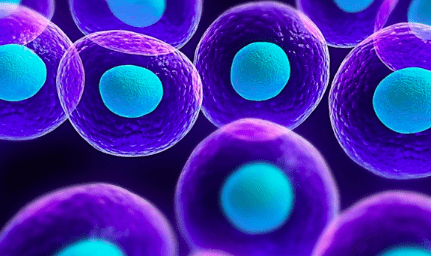
Overview
Joint pain is one of the most common chief complaints encountered in the hospital; it is especially prevalent in older people whose joints have undergone a long process of wear and tear. In this article, we are talking about stem cell therapy for joints in Florida.
Conditions like osteoarthritis and rheumatoid arthritis (RA) affect a large portion of the population, with the latter being more predominant in females.
While this pain could be temporary and symptoms disappear after a short course of treatment, it could also last for months and even years. In that situation, we are dealing with chronic pain as opposed to acute pain.
In this article, we will cover the most common therapeutic options used to manage chronic joint pain and how stem cell therapy could potentially solve this problem for good!
Chronic Joint Back
According to the Centers for Disease Control and Prevention (CDC), an annual estimation of 54.4 million US adults (22.7%) were suspected to have a form of arthritis between the years of 2013-2015.
This number is believed to be an underestimation since many people avoid going to the hospital and prefer home remedies to calm their pain.
Nevertheless, these statistics are still incredibly worrisome because of the disrupted functional prognosis in these patients.
Once you’re diagnosed with a form of arthritis, there are several treatment options to choose from; first, there are the regular painkillers, such as acetaminophen, which should not be taken for prolonged periods because of the hepatotoxicity (liver damage).
Second, we have the Non-Steroidal Anti-Inflammatory Drugs (NSAIDs), which entails ibuprofen, diclofenac, and naproxen. These medications also cause side effects, such as stomach ulcers, some mineral deficiencies, and an increased risk of bleeding.
Another alternative to NSAIDs is corticosteroids (e.g. prednisone); these drugs are prescribed when the NSAIDs are ineffective. The side effects of drugs like prednisone are extremely serious and include Cushing syndrome, high blood sugar levels, osteoporosis, and immunosuppression.
The final treatment option for joint problems involves the use of non-pharmacological drugs, such as cryotherapy and thermotherapy.
These techniques have not proven to be effective and cannot be relied on as the first-line or exclusive treatment of arthritis.
Stem Cell Therapy
As discussed in the previous section, most treatment options for joint problems carry some serious side effects that may surpass the articular symptoms; therefore, scientists were always on the look for new potential therapies to help patients without having to go through that entire profile of side effects.
For these reasons, researchers began seeking out the potential of stem cell therapy for joint and chronic pain conditions.
The idea was that patients who are dealing with osteoarthritis are most likely to have their joints degenerate. In other words, these articulations have lost some elements of their structure, such as bone, cartilage, and ligaments. And since stem cells can differentiate to any cell type, the science became more inquisitive to discover the potential behind stem cells.
So far, however, this treatment doesn’t offer a cure-all solution to joint problems, but it is still a great option to manage your symptoms and help regenerate some function if traditional treatments may not be felt as effective or your body is not tolerating the side effects of conventional therapies.
Conclusion
Many fields of medicine are starting to incorporate stem cell therapy in their treatment protocols, and the field of orthopedic surgery is getting its fair share.
Hopefully, in the near future, we will learn how to use this technology the proper way to end the “epidemic” of joint problems.
If you are interested in learning about this treatment, contact us today for a free consultation!

 St. Petersburg, Florida
St. Petersburg, Florida
